We are working on a number of Alder Lake-N reviews. Frankly, all E-core designs are very exciting as we get a performance boost over the previous generation as well as new features. Expect those reviews soon in our STH Mini PC series. In the meantime, ASRock has two new motherboards. The ASRock N100DC-ITX is the mITX platform. A bit larger is the ASRock N100M in a mATX form factor, which is really interesting given the N100’s capabilities.
ASRock N100DC-ITX and ASRock N100M
Both of the new motherboards support several common features. For example, they utilize the quad-core Intel N100 processor. They also have only a single DDR4 DIMM slot, Realtek 1GbE networking, Realtek ALC897 audio, two SATA ports and a PCIe Gen3 M.2 slot for storage, and an E-key M.2 slot for WiFi.
The ASRock N100DC-ITX can take a 19V DC power input. The four USB ports are USB is 3.2 Gen 1 so they are only 5Gbps ports. We also only get two display outputs HDMI and VGA.

The expansion slots are a PCIe Gen3 x4 slot but only x2 electrical.
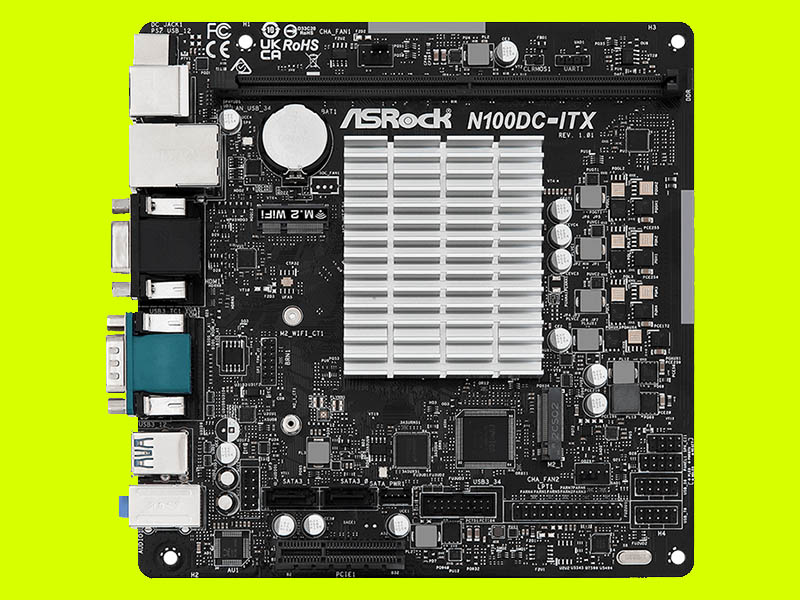
The ASRock N100M takes things up a notch. It has three display outputs with VGA, HDMI, and DisplayPort. It also has a USB 3.2 Gen2 Type-C to go along with the four USB 3.2 Gen1 ports.
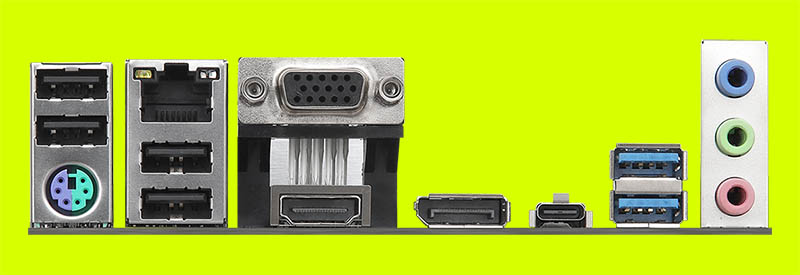
On the expansion side, the N100M has a PCIe Gen3 x16 slot, but do not get your hopes up. This is only running in x2 mode. The PCIe x1 slot is a Gen3 as well.
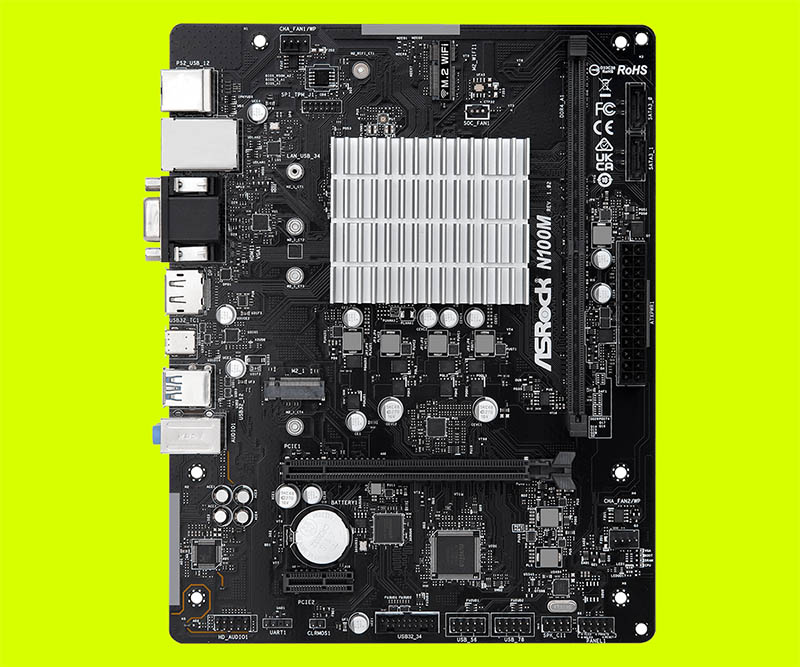
While this is called a mATX form factor, it is actually 8.9″ x 7″ so it is not a full mATX platform.
Final Words
The Intel N100 is an interesting CPU. It has four E-cores that are clocked higher than we saw in the N5105 and with more cache, as well as a newer GPU generation with things like AV1 decode. Intel also has a lower TDP on the new part but only a single memory channel. It should be interesting to see how the family fares and if folks adopt full-sized motherboards like these from ASRock or smaller platforms instead. If you want more connectivity, perhaps exposing that via a mITX or larger motherboard makes a lot of sense.

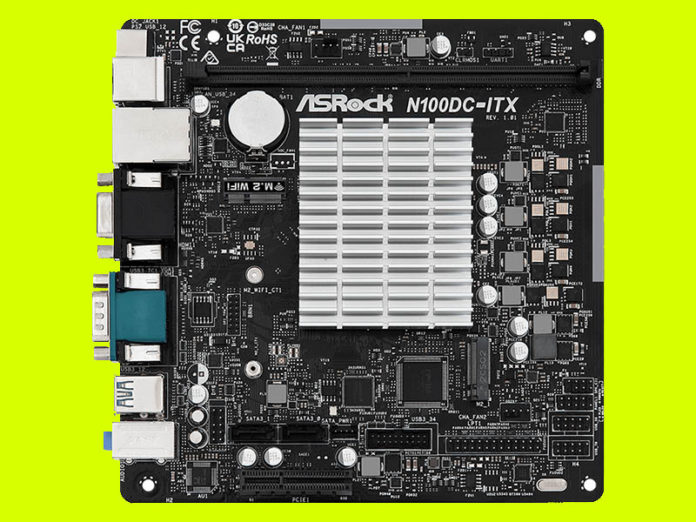
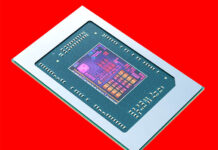
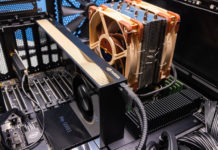

Meh.
Why would anyone use this over Embedded Ryzen ?
Fanless, lower TDP and better GPU than any current embedded Ryzen I’ve seen.
I’ve used quite a few generations of these ASrock Mini-ITX boards and still run a HCI cluster of three on oVirt: the fully passive cooling and full functional equivalent to a server makes them an ideal 24×7 test-bed without much heat or noise.
I was quite disappointed there was no Jasper Lake edition for these Mini-ITX and therefore glad Gracemont makes a showing.
What I dislike is that I can’t just replace the mainboards as I was planning to. The move from SO-DIMM to full DIMM makes little sense and only including a single DIMM socket is debilitating, even if only a single RAM channel is supported.
I wasn’t able to measure significant benefits from dual channel Atoms in terms of bandwidth, they were always far behind their Core cousins even when using quite literally the same DIMMs. Jasper Lake did a little better and that seemed to benefit the 32EU iGPU most, which was noticeably slower with only a single DRAM stick at 4k resolution.
That makes me think that the single channel here will unfortunately make most sense with DDR5, even if there always was quite a lot of potential DRAM bandwidth left unexploited by past Atoms. But dual sockets doesn’t mean dual channel as near every desktop mainboard will attest, while the RAM expandability is a serious shortcoming… probably intentional.
Intel has always lied about the RAM expandability of their Atoms, 16GB has worked for every DDR3 Atom I’ve tried and 32GB was never an issue for every DDR4 Atom. Jasper lake runs just fine with 64GB and I have little doubt Gracemont would do 64GB, too, if there was a second DIMM socket.
The main motivation for Intel’s lies was always market segmentation; Atoms aren’t supposed to be used the way I like using them, to implement small servers.
The standard die for Gracemont is the 8-core i3-n305 with an 32EU iGPU. I very much doubt Intel produces any other die variant, given the small core size relative to all the I/O blocks. A die shot might give their game away, but this is not the type of chip that catches mainstream attention.
While 4 and 2 cores still representing the bulk sales it means most chips are artificially culled rather than binned for defects, a practice I believe Intel isn’t allowed to do under some California anti-trust ruling.
The target price point for a mainboard with a 2 or 4 core Atom seems to remain around €100 (to keep ARM away) which according to rumours is far too low for mainboard makers to make money on, even if they are actually given the Atom chips for “free”. Again, those rumours indicate that Atoms are forced on OEMs in bundles they cannot refuse.
So I am leaning to believe that the single dimm socket is another one of those conditions Intel is forcing on OEMs now, even if there is no technical reason for it. And the most attractive option, the i3-N305, which should also be the default leaving the fabs on a dual SO-DIMM Mini-ITX mainboard just isn’t going to happen.
The other change I’m not too happy about is the 19V power supply, because all the bricks I have from previous generations are 12V and use Pico-PSUs for the traditional ATX power inputs…
If it only had dual memory bandwith and more sata ports or least a PCIe 8x would be a really nice server mobo.
I’m struggling to find a tiny chassis that could fit just the N100DC-ITX motherboard and two SATA SSDs. Can you please help?
All I find are chassis that have room for an internal PSU and GPU, which I don’t need.
I could not find one as well. So I took a dead 1U rack switch and installed it there, including laptop power brick and 3 raid drives
Would be nice to see an N305 option around $250 that includes dual 2.5gb nic, dual ram and an 8x PCIe if possible.
That would be a SOHO best for anything from routing, nas or even some server tasks, or a combination of them all.
A counterpoint is that an Intel Core i3-N305 is $309 1K tray unit price.
What about N200 boards? Or even U300?